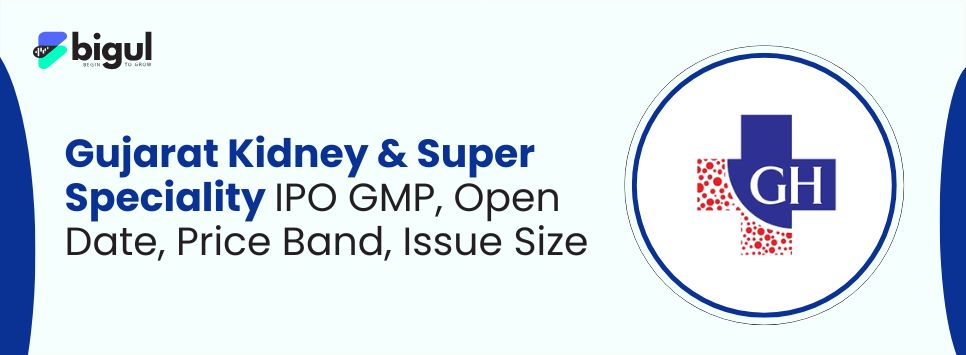FMCG products are everywhere, from the snacks we eat during breaks to the shampoo we use while getting ready in the morning. Because of its bustling vitality and consistent innovation, the FMCG (Fast-Moving Consumer Goods) industry has become a key component of our day-to-day life.
In this article, we deep dive into Nifty FMCG, an index that ranks India’s most successful consumer packaged goods (FMCG) companies.
Get ready to tap into the huge potential of Nifty FMCG, which is paving the way for a bright future in the FMCG world.
What is Nifty FMCG?
Fast-moving consumer goods (FMCG) encompass a variety of transient, non-durable items that are routinely used in our day-to-day lives.
This includes products like cosmetics, healthcare products, packaged foods, beverages, and various household amenities. These items are characterised by their short expiration life, either due to high consumer demand or inherent perishability.
FMCGs are economical, readily available, and have a quick turnover rate, making them high-volume, fast-consumed goods.
In the financial realm, Nifty FMCG is a sector-specific index established by the National Stock Exchange (NSE). It is designed to provide a precise assessment of the performance of FMCG manufacturers.
The NIFTY FMCG Index represents 15 companies in the FMCG industry that produce and distribute widely used consumer goods and have their stocks traded on the NSE.
This index serves as a useful tool for investors, traders, and portfolio managers to evaluate the performance of their investments in the FMCG sector.
List of FMCG Stocks in Nifty FMCG
The FMCG Index is calculated using the free-float market capitalisation method. The level of the index shows how much all the stocks in the index are worth on the free market compared to a certain standard market capitalisation value.
The index consists of 15 FMCG stocks from the National Stock Exchange are listed below.
| S No. | Company Name | NSE Symbol | Weightage (in %) |
| 1 | Hindustan Unilever Ltd. | HINDUNILVR | 29.13% |
| 2 | ITC | ITC | 25.15% |
| 3 | Nestle India Ltd. | NESTLEIND | 9.73% |
| 4 | Britannia Industries Ltd. | BRITANNIA | 5.14% |
| 5 | Godrej Consumer Products Ltd | GODREJCP | 4.90% |
| 6 | Varun Beverages Ltd. | VBL | 4.77% |
| 7 | Dabur India Ltd. | DABUR | 4.39% |
| 8 | Tata Consumer Products Ltd. | TATACONSUM | 3.37% |
| 9 | Marico Ltd. | MARICO | 3.21% |
| 10 | United Spirits Ltd. | MCDOWELL-N | 2.82% |
| 11 | Procter & Gamble Hygiene & Health Care Ltd | PGHH | 2.06% |
| 12 | Colgatepalmolive india Ltd | COLPAL | 2.03% |
| 13 | United Breweries Ltd. | UBL | 1.76% |
| 14 | Emami Ltd. | EMAMILTD | 0.81% |
| 15 | Radico Khaitan Ltd | RADICO | 0.73% |
The Nifty FMCG Index is experiencing a significant performance increase in the current market environment. Fast-moving consumer goods (FMCG) giants such as Hindustan Unilever, ITC, and Nestlé are outperforming the market as a whole.
After a period of relative underperformance, these FMCG firms have demonstrated resilience and are currently gathering momentum. Compared to the Nifty50 index over the past month, the Nifty FMCG index’s growth is remarkable. This shift in investor sentiment towards the FMCG sector reflects the strength and potential of these market leaders.
Why the FMCG Industry?
The FMCG sector stands as the fourth-largest industry in India, demonstrating consistent growth due to increasing disposable income, a younger population, and heightened brand awareness. Dominating 50% of FMCG sales in India, household and personal care products significantly affect the country’s GDP.
India, with a middle-class population exceeding the entire population of the United States and China, is a crucial market for FMCG companies. As more Indians climb the economic hierarchy and enjoy economic development benefits, the Indian FMCG market continues to thrive.
Notably, with a median age of only 27, India is witnessing a surge in consumerism as aspirations grow. Government initiatives that enhance financial inclusion and provide social safety nets have further bolstered this growth in the FMCG industry.
The Significance of Nifty FMCG in Trading and Wealth Management
The Nifty FMCG Index is important in trading and wealth management. As a symbol of the fast-moving consumer products industry, it gives investors access to a vital sector. The index provides diversification and consistent returns. Here’s a list of a few Significances:
- Industry Representation:The Nifty FMCG Index tracks the fast-moving consumer goods industry. Investors seeking reliable returns are drawn to this sector, which produces vital goods with steady demand.
- Diversification:The Nifty FMCG Index can diversify a portfolio. FMCG companies have unique market characteristics, which can minimise portfolio risk and boost returns.
- The Benchmark for Performance:The Nifty FMCG Index is a benchmark for NSE-listed FMCG companies. Investors, traders, and wealth managers can compare their FMCG investments to the market and peers.
- Indicator of Consumer Sentiment:The Nifty FMCG Index can indicate consumer sentiment and economic trends because the FMCG industry is strongly tied to consumer spending. Consumer behaviour, buying power, and economic conditions might affect the index.
- Investment and Wealth Management Plans: Wealth managers and advisors use the Nifty FMCG Index to create client investment plans. They can match asset allocation, portfolio rebalancing, and stock selection with their customers’ financial goals and risk profiles by assessing sector performance and index stock weights.
- Market Outlook:The Nifty FMCG Index can reveal the market mood. The FMCG industry and market may be optimistic if the index demonstrates strength and positive momentum.
Final Words
In the exciting world of asset management, the Nifty FMCG Index is a powerful factor. It guides investors to fast-moving consumer products’ lucrative realms.
This index allows savvy buyers to diversify and take on the financial market’s unpredictability by measuring FMCG companies’ performance. The Nifty FMCG Index helps asset managers navigate treacherous seas by predicting how individuals feel and how the economy behaves.
It offers trading opportunities and tantalising suggestions about the future through its market outlook indicators.

.jpg)






.jpg)
.jpg)
